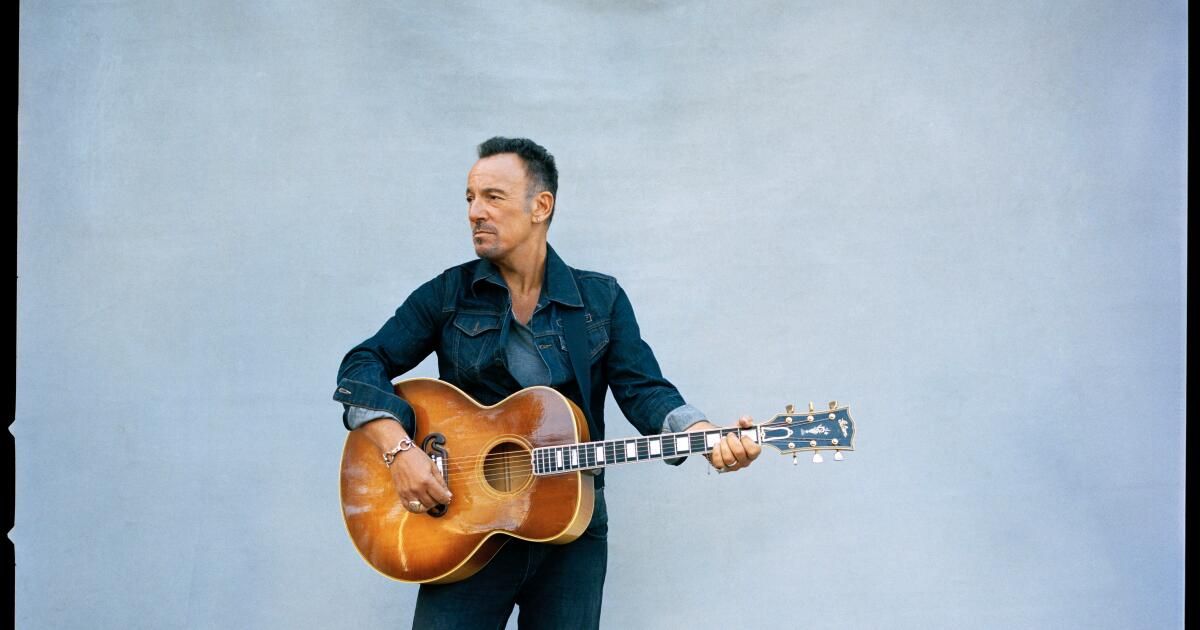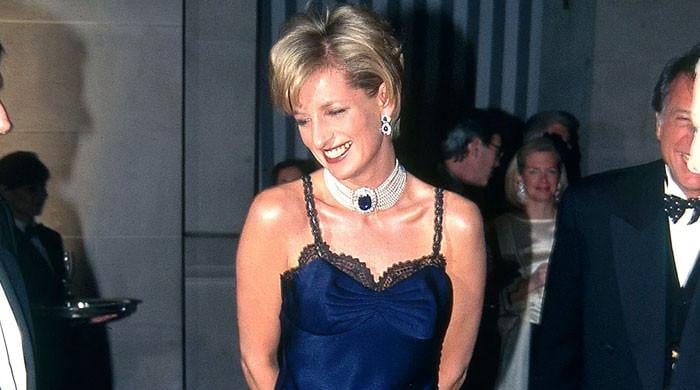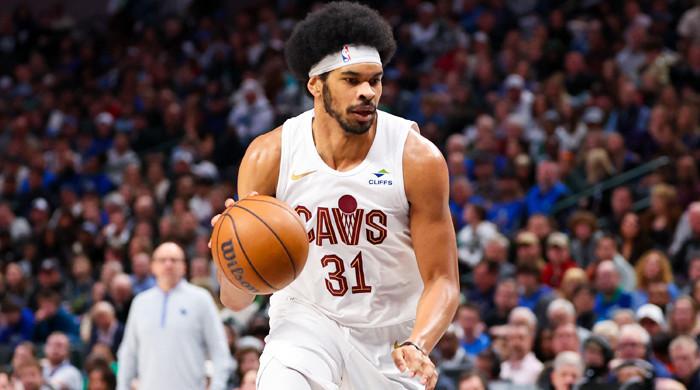Fifty years after becoming a rock soaked rock star with “Born to Run” of 1975, Bruce Springsteen has opened its vault of unpublished material for a new cash set that covers almost the duration of the half century that has spent pursuing a fugitive American dream.
“Track II: The Lost Albums” collects 83 songs, the vast majority of them unprecedented even by the dedicated fans of the boss. It is a sequel to 1998, which offered demonstrations and shots to complete the history of one of the most prolific and meticulous composers of music. But unlike the previous set, “Tracks II” organizes their songs in seven different lps, each with a different sound and theme; Springsteen says it came this Near them free some of them at the time they were made, but finally decided not to do so for several reasons related to their life and career.
As an Archiving Pop project, the amplitude and depth of “Tracks II” put it along with the docuseries of the Beatles of the Peter Jackson “Get Back” and with the series of re-recordations of “Taylor versions” by Taylor Swift. And it arrives at a time when Springsteen, 75, is already in the headlines thanks to his war war with President Trump for the aggressive deportation policies of the latter and to the trailer recently presented by “Deliver me from which I give me from nothing” of this fall, in which Jeremy Allen White plays Springsteen. Times's pop music critic, Mikael Wood, and staff writer, August Brown, gathered to discuss the cash set and what to do with their generosity.
Mikael Wood: Let's start with how Springsteen and your team are implementing this giant. As I have interpreted the essays, videos and interviews that have configured “Tracks II”, see the box established as an opportunity to remodel our understanding of the boss in two ways.
The first is that it was ambivalent about rock stardom: “The Garage Sessions '83” is the first of the albums here, and seems to highlight the idea that Springsteen passed without problems of the LO-FI “Nebraska” in 1982 to the wets of “Born in the USA” in 1984; This lost LP, that the singer cut mainly on his own in a small apartment on a house he had bought in the Hollywood hills, suggests that he was tempted to stay in that more writer instead of moon for the MTV of everything. In my opinion, it is to argue that perhaps it was not as anxiously as we thought, that even then I was weighing the benefits and costs of becoming a sexual symbol in a couple of jeans that hugged the vagabundos.
The other thing that I think “Tracks II” is to try to do is correct the record with respect to Springsteen in the 90s. He released three albums in the grunge decade, none of which did it particularly (at least for Boss standards). However, here there are three more LPs that tell us that he was busy experiencing at that time instead of simply waiting for the time of Pearl Jam: “Sessions of the streets of Philadelphia”, which arose from the moment that produced his winning theme of an Oscar of the “Philadelphia” of Jonathan Demme, he has it loomed in synthesizers and drums; “Somowhere North of Nashville” is a playful country record that made at the same time as the “most contemplative Tom Joad's ghost”; “Inyo” is inspired by Mexican music that says he heard while traveling through southern California on his motorcycle.
These acts of maintenance of the tradition closely follow Springsteen's memoirs and their single -man Broadway show and a series of recent documentaries, and of course, “tracks II” will come out just before the spectacular biographical that promises to trigger a Boss Asaw not very different from the only “a complete stranger” last year for Bob Dy. But what do you think, August, of this perceived need to adjust the springsteen framing? Does it hit you in 2025 as an artist that anyone could have been wrong?
August Brown: I think you are in something, Mikael: This box is a recovery of Springsteen as a challenging and skeptical composer, even during the periods in which his pop culture state raised it so that it now seems inevitable, even mythical.
There has never been a more fruitful age for fans who want to dig under the hood of the Springsteen process. The successful Broadway show and his acclaimed book of critics laid the foundations for “Entraz Me From Nowhere”, which seeks to capture it in the desolate, brilliant and transitional moment of “Nebraska”. It is a time when Springsteen has described as “depression … throwing as an oil spill throughout the beautiful turquoise green gulf of my carefully planned and controlled existence.” He compared depression with a “black mud … threatening to quell until the last living part of me.”
Can you imagine being a film executive who obtained the rights of a Bruce biographical film just to tell you that you are receiving the history of his most impeccably miserable solo album?
But it comes next to “Tracks II”, which adds a ton of new texture and pointed context to the time when Bruce exploded from the blue neck ambassador to a global superstar. I agree that “the Garage sesions '83” shows its mixed emotions about becoming the most famous Tuchus in the country if that came at the expense of its literary aspirations. It is wild to discover that while channeling the bombing of “Born in the USA”, he was also turning “Klansman”, a melancholic study of the American evil that promises: “When the war between the races leaves us in a burning dream / it will be a Klansman that will clean this country clean / this son, it is my dream.”
Wood: Talk about dancing in the dark.
Beyond the four albums we have mentioned, “Tracks II” also contains “Faithless”, which Springsteen describes how the soundtrack of a “spiritual western” abandoned with which he was involved in the mid -2000s; the “twilight hours” sarcastically orchestrated; and “Perfect World”, which departs from the concept of the box of the box simply rounding 10 rock songs that never found an adequate home while recording them in recent decades. (In the essay that accompanies the “perfect world,” says “if you could only be your lover” he almost succeeded in the “Demolition Ball” of 2012, “but it was not political enough”).

Taken together, the variety of work here makes you ask: is anyone more flexible among Bomer-Royaltis partners of Springsteen? I would say that Paul McCartney and Stevie Wonder are able to do so many different things, although I am not sure that he has not been driven to do them for years. Taken one by one, the albums show how committed was Springsteen with each style he was occupying.
Brown: I especially like the horny and apocalyptic mode of “waiting at the end of the world”, from “sessions of the streets of Philadelphia”. But I have been returning more frequently to “Inyo”, which finds it directly in the van zandt mode of tired minimalism townes while evoking scenes from the California desert and the Mexico border city, a gender environment that feels especially resonant from our point of view of a low siege.
Speaking of that: for me, one of the most interesting things of this set of narrative albums that they overcome is that it reaches a time dominated by Trump when the state of Springsteen as the bard of white America of the working class is probably as inaccurate as ever.
I remember seeing Bruce back on the Vote For Change tour of 2004 with the Bright Eyes and Rem, imploring my Floridan companions who go out for John Kerry. (We all know how that turned out.
But who are we joking? Any type of magician who had ever heard the boss's thoughts on organized work and fascism resistance has probably gone forever, even if he brings the real type of the tri-state area of the 80s that the White House currently occupies. In the best case, those blue neck types are online today for Zach Bryan; Most are listening to Morgan Wallen.
Wood: I cannot imagine that the billions of dollars reported that Springsteen won in 2021 when selling his catalog made a lot to deter those inclined to see him as a coastal elite for a long time that he stayed out of contact with the common man. (Bruce and Don: Only two rich types fighting for the soul of Lunchpail Larry).
His point about “Inyo” makes me think about how much of the music “Tracks II” arose from the time of Springsteen in California, a place that seemed to see in the 80s and 90s as a refuge of fame and a source of creative renewal. The essay that accompanies “Streets of Philadelphia Sessions”, for example, tells us that he cut the demonstrations for that lost album in his place in Bel-Air, where he had moved after his Hollywood Hills house was damaged in the Northridge earthquake; Obviously, Springsteen began using battery loops because he had deepened the Hip-Hop on the west coast.
Since this was at the beginning of 1994, I wonder if I was also listening to Beck's “loser” in Kroq, something that a song like Funky “Brind Spot” certainly suggests that it was the case. I like the idea that an artist so immersed in the history and mythology of New Jersey found that his wheels returned in new directions here.
Brown: What has happened with his ability to gather the center of the country, “tracks II” shows that the only person Springsteen could always push was himself, wherever the muse took him, even at the height of his celebrity. I can see why he filed these small restless but completely made albums, since they would have complicated his tradition at a time when rock music was changing under him, just before his rebirth of the 2000s with “The Rising.”

But they deepen and affirm what, I think, “surrender to nothing” is trying to do for its time of the 70s: it shows that Bruce's ubiquity in the 80s, and the new rock rotation in the 90s, left him restless and returning to the robust crafts and the scene experiments he loved. These records do not reveal anything amazing about their ambitions, but show that, given the option of being an artist or a hero, he never shortened the first even when the culture was begging for the second.
I mentioned that “Inyo” is probably my favorite of lost albums. And you?
Wood: It is probably the greatest atypical value in the group, but I am fascinated by “Twilight Hours”, which collects Springsteen songs cut during the sessions that produced “Western stars” of 2019. That album had a gleaming atmosphere of Glen Campbell, but this is more humor and more dejected; He leans towards the Sinatra of “In the small hours”, with Bruce singing about loneliness and repentance in the lush arrangements of horns and strings. (For a comparison, I might think of “Painted from Memory” by Elvis Costello and Burt Bacharach, 1998.)
Springsteen's voices are intimate but highly theatrical, a mode of “convicted romanticism”, as he put in an interview with The Times of London. It is a nostalgic record, sure, but there is also something mysterious, as if I was not sure of what precisely long for or why. Like “Tracks II” as a whole, “Twilight Hours” is the unrevented road, and sounds haunted and enriched by the possibility.












